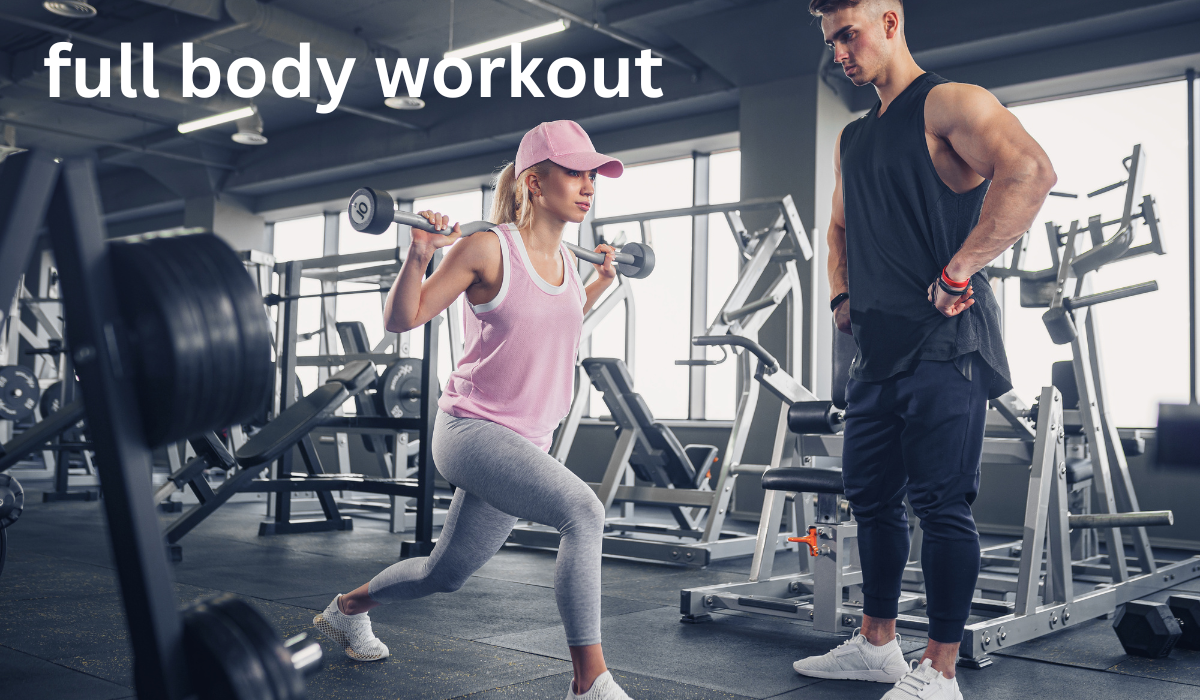A full body workout is the cornerstone of efficient fitness training, targeting all major muscle groups in a single session. Whether you’re a busy professional, a gym enthusiast, or a home workout warrior, this approach maximizes time, enhances functional strength, and accelerates fat loss. In this guide, we’ll dive into the benefits of full body workouts, the best exercises, and how to design a routine that delivers results.
Why Full Body Workouts? Key Benefits
- Time Efficiency: Train smarter, not longer. Full body routines consolidate exercises, making them ideal for busy schedules.
- Increased Muscle Activation: Compound movements like squats, deadlifts, and push-ups engage multiple muscle groups simultaneously.
- Enhanced Metabolism: High-intensity full body sessions boost EPOC (Excess Post-Exercise Oxygen Consumption), burning calories long after your workout.
- Functional Fitness: Mimic real-world movements to improve balance, coordination, and daily performance.
- Flexibility for All Levels: Adaptable for beginners (using bodyweight exercises) or advanced lifters (adding resistance bands or weights).
Top Full Body Exercises to Include
Incorporate these compound exercises for balanced strength and muscle growth:
- Squats (Targets quads, glutes, hamstrings, and core).
- Deadlifts (Works posterior chain: back, glutes, hamstrings).
- Push-Ups (Engages chest, shoulders, triceps, and core).
- Pull-Ups/Rows (Strengthens back, biceps, and shoulders).
- Lunges (Improves leg strength and stability).
- Burpees (Combines cardio and strength for a metabolic boost).
- Planks (Builds core endurance and full-body stability).
Pro Tip: Add HIIT (High-Intensity Interval Training) elements like jump squats or kettlebell swings to elevate heart rate and fat burning.
Sample Full Body Workout Routine
(Equipment: Dumbbells, resistance bands, or bodyweight)
- Warm-Up: 5–10 minutes of dynamic stretches (arm circles, leg swings) or light cardio (jump rope).
- Circuit 1:
- Goblet Squats (12 reps)
- Push-Ups (10–15 reps)
- Bent-Over Rows (12 reps)
- Circuit 2:
- Reverse Lunges (10 reps per leg)
- Dumbbell Deadlifts (12 reps)
- Plank Shoulder Taps (20 taps total)
- Finisher: 5 minutes of HIIT (30 seconds sprinting in place, 30 seconds rest).
- Cool-Down: Stretch major muscle groups (hamstrings, chest, shoulders).
Frequency: Aim for 3–4 sessions weekly with rest days for recovery.
Maximizing Results: Tips for Success
- Progressive Overload: Gradually increase weights, reps, or intensity to avoid plateaus.
- Prioritize Form: Prevent injuries by mastering technique before adding load.
- Mix Modalities: Combine strength training, cardio, and mobility work for holistic fitness.
- Rest and Recovery: Allow 48 hours between sessions for muscle repair.
- Fuel Your Body: Consume protein-rich meals and stay hydrated to support muscle growth.
Common Mistakes to Avoid
- Overtraining: Full body workouts are demanding—don’t skip rest days.
- Neglecting Core Work: A strong core stabilizes every movement.
- Skipping Warm-Ups/Cool-Downs: Prep muscles and prevent stiffness.
- Ignoring Nutrition: Pair workouts with balanced macros for optimal gains.
Nutrition for Full Body Workout Success
- Pre-Workout: Eat carbs and protein 1–2 hours prior (e.g., oatmeal + banana).
- Post-Workout: Refuel with 20–30g protein (chicken, whey shake) and complex carbs (sweet potato).
- Hydration: Drink water before, during, and after sessions.
FAQs About Full Body Workouts
Q: Can beginners do full body workouts?
A: Absolutely! Start with bodyweight exercises and light resistance.
Q: How long should a session last?
A: 45–60 minutes, including warm-up and cool-down.
Q: Can I build muscle with full body workouts?
A: Yes—compound lifts and progressive overload stimulate hypertrophy.
Final Thoughts
A full body workout is a versatile, results-driven approach for anyone aiming to build strength, torch fat, and improve overall fitness. By integrating compound exercises, HIIT, and smart recovery strategies, you’ll unlock lean muscle growth and functional power. Ready to transform your routine? Grab your gear and start sweating!


The article by Jess Klintan on Sportsrater.co.uk provides a fresh perspective on sports analysis. I appreciate the detailed insights and the clarity of the writing. However, I’m curious about the methodology used to rate the sports performances. It would be helpful to have more context on the criteria applied. Do you think there’s room for improvement in the rating system? Also, are there plans to include more sports in future articles? Overall, it’s a great read, but I would love to see more interactive elements, like polls or user feedback. What’s your next big focus for the site?
This is an interesting introduction to Jess Klintan and their role at Sportsrater.co.uk. I appreciate the transparency in sharing the email for contact. It’s great to see a clear point of contact for readers or collaborators. I wonder what kind of sports content Jess specializes in—is it analysis, reviews, or something else? The site seems like a valuable resource for sports enthusiasts. How often is new content published? I’d love to hear more about the vision behind Sportsrater.co.uk and what makes it stand out. What’s the most popular type of content among readers?
Interesting insights from Jess Klintan on Sportsrater.co.uk! The content seems well-curated and engaging. I appreciate the dedication to delivering quality sports analysis. Have you considered expanding into more niche sports categories? Your perspective would add depth there. How do you decide which topics to focus on each week? Keep up the great work—it’s refreshing to see such commitment! Any plans for reader interaction or Q&A sessions?
This is incredibly helpful and gives a clear point of contact for Jess Klintan at Sportsrater.co.uk. It’s great to see such transparency in roles and responsibilities. I’m curious about the kind of content Sportsrater typically focuses on—could you share more about the topics or sports you prioritize? It’s always interesting to know the editorial direction of a platform. Also, how open are you to contributors or guest writers? I’d love to hear more about your process for selecting and working with writers. Overall, this seems like a well-structured approach to managing a sports site. What inspires you most about leading content at Sportsrater?
I really enjoyed the article by Jess Klintan—it’s refreshing to see such in-depth sports analysis. The clarity of the writing makes it accessible, yet still insightful. I’m particularly curious about the methodology behind the performance ratings—could you elaborate on how you determine the criteria? It seems like there’s potential to expand the rating system further. Have you considered including more niche sports in future pieces? I think that could bring a unique angle. The idea of interactive elements like polls or feedback is brilliant—it would definitely engage readers more. What’s next for Sportsrater? I’m excited to see where you take it! Would love to hear your thoughts on these suggestions!